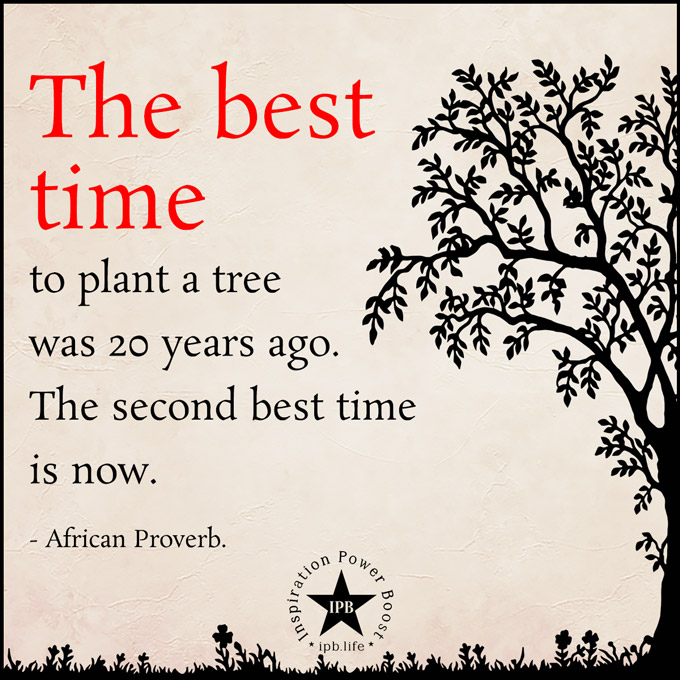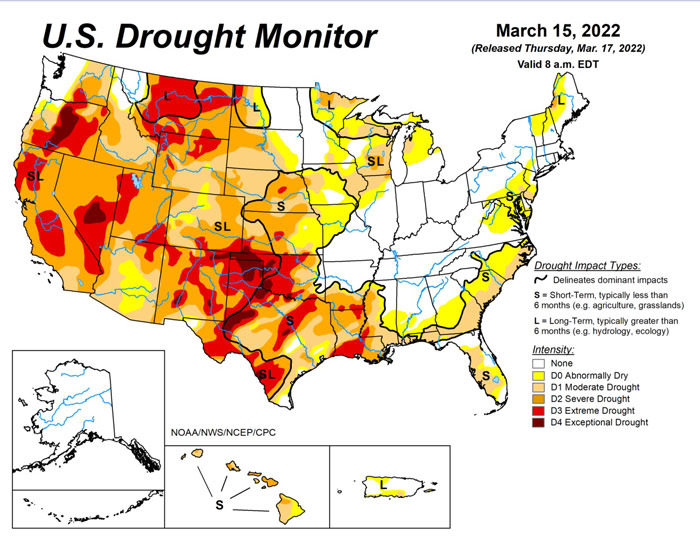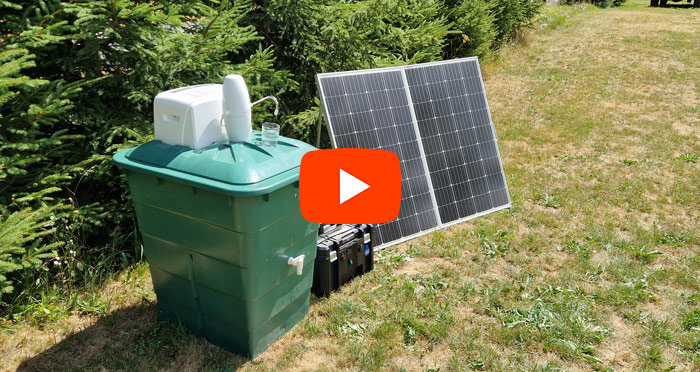
The Best Time To Plant A Tree Was 20 Years Ago Graphic © InspirationPowerBoost.com
“The best time to plant a tree was 20 years ago. The second best time is now.”
26 Fascinating Facts About Trees
1. Trees are the largest and oldest living organisms on Earth, with some species living for thousands of years.The lifespan of some trees can range from hundreds to thousands of years. For example, the Bristlecone Pine in the United States is known to live for over 5,000 years. The oldest tree ever recorded is a bristlecone pine named “Methuselah,” estimated to be over 4,800 years old. It is located within the White Mountains of California.
2. Trees play a crucial role in the Earth’s climate by absorbing carbon dioxide and releasing oxygen. In fact, a single tree can absorb up to 48 pounds of carbon dioxide per year.
3. Trees provide numerous ecological benefits, such as creating habitats for various animals, stabilizing soil and preventing erosion, regulating water cycles, and improving air quality. A single tree can be home to over 100 different species of birds.
4. Trees help to purify the air by removing pollutants and particulate matter from the atmosphere.
5. Trees are a vital source of food, with many species producing edible fruits, nuts, and berries. In fact, trees provide over 70% of the world’s food supply.
6. Trees are also a source of medicine, with many species having medicinal properties. For example, the bark of the willow tree contains salicylic acid, which is the original molecule from which aspirin was derived.
7. Some trees have the ability to communicate with each other through a network of fungi known as the “wood wide web.” This network allows trees to share nutrients, water, and even “information” about threats such as pests or diseases.
8. Trees have a profound impact on the water cycle, with some species able to absorb and store large amounts of water. In fact, a single tree can absorb up to 100 gallons of water per day.
9. Trees provide shade and cooling, which can help to reduce the temperature in urban areas by up to 10 degrees Fahrenheit.
10. Trees are a vital source of building materials, with many species being used for lumber, furniture, and paper production.
11. Trees have a significant impact on soil quality, with their roots helping to break up and aerate the soil, and their leaves and branches providing organic matter.
12. Some species of trees have unique adaptations to survive in extreme conditions. For example, the Joshua Tree is specially adapted to the arid desert climate, with its long root system and thick succulent leaves.
13. Trees are a vital part of many cultures and religions, with many species being considered sacred or symbolic. In fact, the ancient Egyptians believed that the tree was a symbol of life and rebirth.
14. Trees have a unique ability to heal themselves, with some species being able to regrow lost limbs or repair damaged bark.
15. Trees are an important source of biofuels, with many species being used to produce ethanol and other renewable energy sources.
16. Trees are a vital part of the hydrologic cycle, with their roots helping to regulate the flow of water into rivers and streams.
17. Trees provide a natural form of pest control, with many species producing chemicals that repel insects and other pests.
18. Trees are an important source of building materials for wildlife, with many species using tree branches and leaves to build their nests and habitats.
19. Trees have a significant impact on the urban environment, with studies showing that trees can help to reduce crime, improve air quality, and increase property values.
20. Trees are a vital part of the carbon cycle, with many species being able to store large amounts of carbon in their trunks, branches, and roots.
21. The tallest known tree species in the world is the Coast Redwood (Sequoia sempervirens). They can reach heights of up to 379 feet (115 meters) – taller than a 30-story building.
22. The world’s largest living tree in terms of volume is the General Sherman Tree, a Giant Sequoia located in California’s Sequoia National Park. It has an estimated volume of over 52,000 cubic feet (1,478 cubic meters).
23. The annual rings visible in tree trunks can provide valuable information about the tree’s age, growth rate, and even climate conditions during different years.
24. Trees can significantly reduce noise pollution by acting as barriers and absorbing sound waves. Planting trees along roads or near buildings can help create a quieter environment.
25. Earth now has 46% fewer trees than it did 12,000 years ago, when agriculture was in its infancy.
26. Earth has more than 60,000 known tree species. These range from Abarema abbottii, a vulnerable limestone-bound tree found only in the Dominican Republic, to Zygophyllum kaschgaricum, a rare and poorly understood tree native to China and Kyrgyzstan.
😳 What Tinnitus Does To Your Brain Cells (And How To Stop It)
After 47 years of studies and countless brain scans done on more than 2,400 tinnitus patients, scientists at the MIT Institute found that in a shocking 96% of cases, tinnitus was actually shrinking their brain cells.
As it turns out, tinnitus and brain health are strongly linked.
Even more interesting: The reason why top army officials are not deaf after decades of hearing machine guns, bombs going off and helicopter noises…
Is because they are using something called "the wire method", a simple protocol inspired by a classified surgery on deaf people from the 1950s...
This Crazy Off Grid Device Literally Makes Drinkable Water From Fresh Air:
According to NASA, the U.S. is expecting a 100-YEAR LONG MEGADROUGHT.
It's already begun. Ask the farmers in California. They know.
Every survivalist knows that water is of critical importance. You NEED an independent water source that you can count on!
As an interesting "survival rehearsal" - imagine that you turned the tap on right now and nothing came out. How long would you last?
But what if there was another water source literally hidden in plain sight? That's right, I'm talking about the atmosphere!
The amazing thing about getting water from the natural moisture in the air... is that it is ALWAYS available.
This gives you real water security!
Learn more about how to tap into "Nature's secret water reservoir" and stay hydrated when TSHTF!
Watch the video:
Most People Don't Have The Guts To Try This:
An amazing discovery in an abandoned house in Austin, Texas: A lost book of amazing survival knowledge, believed to have been long vanished to history, has been found in a dusty drawer in the house which belonged to a guy named Claude Davis.
Remember... back in those days, there was no electricity... no refrigerators... no law enforcement... and certainly no grocery store or supermarkets... Some of these exceptional skills are hundreds of years of old and they were learned the hard way by the early pioneers.
>> Click here to find out about them now
We've lost to history so much survival knowledge that we've become clueless compared to what our great grandfathers did or built on a daily basis to sustain their families.
Neighbors said that for the last couple of years Claude has tried to unearth and learn the forgotten ways of our great-grandparents and claimed to have found a secret of gargantuan proportions. A secret that he is about to reveal together with 3 old teachings that will change everything you think you know about preparedness:






